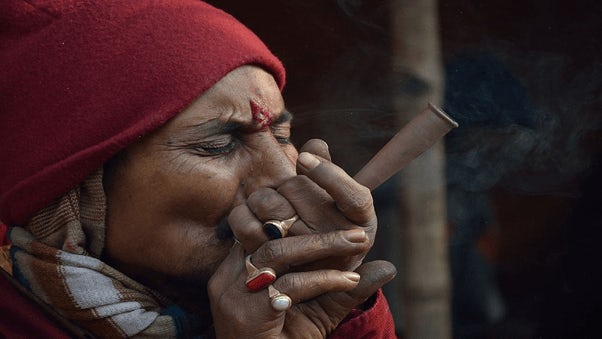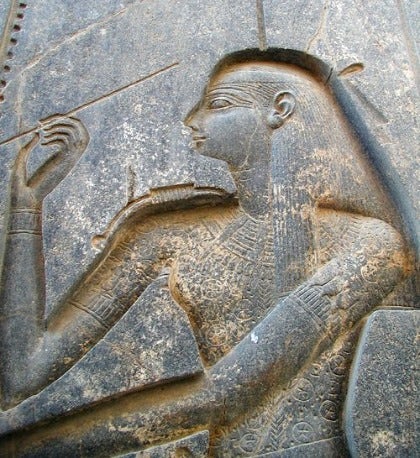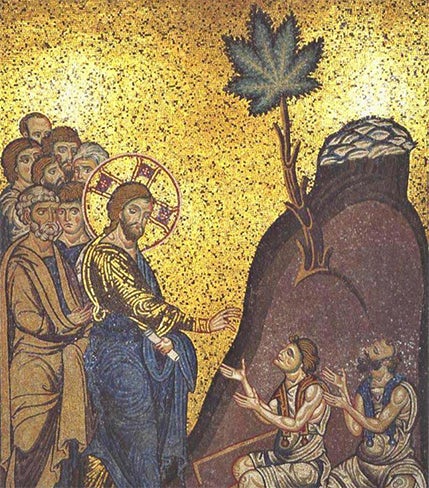We live in something of a golden age of marijuana, but if you look back in history you can find evidence that human beings were using cannabis for all types of purposes — even well before recorded history. From ritual rites in ancient China to a treatment for Pharaohs suffering from glaucoma or a way for Dutch ne’er-do-wells to unwind during the heyday of the Dutch East India Company, marijuana has been part of the human experience since way before anyone ever dreamed of the Summer of Love or the release of “The Chronic” in 1992.
When trying to piece together the history of human cultivation and consumption of cannabis, we must go back thousands of years, to the mountains of western China.
Marijuana in Ancient China
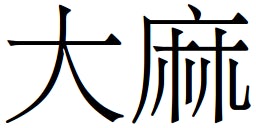
At a cemetery in the Pamir mountains of western China in 2019, researchers found evidence that cannabis was being smoked in ritual mortuary ceremonies around 500 BCE. This is believed to be the earliest known record of humans using cannabis for its psychotropic effects.
“We can start to piece together an image of funerary rites that included flames, rhythmic music, and hallucinogen smoke, all intended to guide people into an altered state of mind,” the researchers wrote.
They wrote that the strength of the psychoactive components of the cannabis plant indicate that they were either cultivated or selected for their potency.
But if we were to head back several millennia prior to the island of Taiwan off the coast of far-east Asia, we can find evidence of far-earlier cannabis use by humans.
According to E.L. Abel in “Marihuana: The First Twelve Thousand Years”, “the earliest record of man’s use of cannabis comes from the island of Taiwan located off the coast of mainland China,” in an ancient village dating back over 10,000 years ago to the Stone Age.
According to Abel, archaeologists excavating the site found broken pieces of pottery “the sides of which had been decorated by pressing strips of cord into the wet clay before it happened.”
As Abel writes “these simple pots, with their patterns of twisted fiber embedded in their sides, suggest that men have been using the marihuana plant in some manner since the dawn of history.” In this particular case, in order to produce hemp fiber.
In ancient China, cannabis was known as ma and was used to produce textiles, in particular for commoners who could not afford silk and other finer fabrics. The ancient book Shu King, which dates to around 2,350 BC, refers to hemp cultivation in the Shandong province in eastern China.
Of all the Chinese innovations, from gunpowder to pasta, perhaps paper is the most influential. In fact, the world’s oldest recovered piece of paper, dating from 140-87 BCE, was excavated from a tomb in Shaanxi province — and was made of hemp fiber.
There is also extensive archaeological evidence indicating how the Ancient Chinese used hemp seeds as a food source, and it remained a staple of the Chinese diet through the 10th century.
But what about medicinal cannabis? The use of cannabis has been recorded in Chinese medical texts for nearly 2,000 years, and the use of cannabis seeds for medicine has been recorded for at least 1,800 years. Chinese legend in fact holds that emperor Shen Nung discovered the healing properties of marijuana back around 2700 BCE.
In the second century AD, a Chinese doctor by the name of Hua Tuo used cannabis as an anesthetic, and during the Tang Dynasty in the early seventh century AD, China established its first school of medicine, which among other subjects, taught about the benefits of cannabis.
Does this mean that cannabis is a tried and true “Made in China” product? That might be a bit of an exaggeration, but the history of Chinese use of cannabis is second to none.
Marijuana in Japan: The Meiji Era
While Japan’s history of cannabis use can’t touch the pedigree of China’s, a literature review published in October 2020 found that during the Meiji Era in Japan, which spanned from 1868 to 1912, cannabis was prescribed to treat a variety of medical ailments including pain, indigestion, asthma, tuberculosis, and gonorrhea, among others.
The review states that in the Japanese Pharmacopoeia, whose 3rd edition was published during the Meiji Era, cannabis indica is described as an anesthetic, and the book also gives instructions in the production of cannabis tinctures. The report states that Japan “had embraced the latest European pharmacology without resistance,” including in regards to medicinal cannabis.
Present-day Japan is known for having very strict anti-cannabis laws, and according to the literature review, during the Meiji era “there were already Cannabis regulations in that era, but its medicinal use was more liberated than nowadays. It may be a chance to reconsider the current legal system, which strictly controls the use of Cannabis.”
Marijuana in Ancient Egypt

Anyone who has spent much time staring at hieroglyphics probably wouldn’t find it hard to imagine that cannabis was in use in ancient Egypt.
In fact, deep within those hieroglyphics are depictions of what the Egyptians referred to as shemshemet — cannabis.
While it’s unclear how early the ancient Egyptians began using cannabis, “it has remained in active use ever since pharaonic times. It does not appear very often in the medical papyri, but it was administered by mouth, rectum, vagina, bandaged to the skin, applied to the eyes and by fumigation.”
In Dr. Ethan Russo’s “History of Cannabis and Its Preparations in Saga, Science, and Sobriquet,” he mentions texts from the Fifth Dynasty, dated to 2,350 BCE, which refer to the use of cannabis to produce rope, and posits that it may be the oldest written description of cannabis.
Russo states that a papyrus from 1700 BCE writes about using cannabis as “a treatment for the eyes,” and surmises that it suggests a parallel to modern day use of cannabis in glaucoma treatment or for its anti-inflammatory effects. Others use details included as a poultice on a toenail, as a vaginal suppository “to treat gynecological disorders and migraine.”
But what about the Pharaohs themselves? Extracted in 2017, the remains of Pharaoh Ramses II are widely reported to have had traces of cannabis, whereas a study from 1995 that looked at the internal organs of an Egyptian mummy dating from around 950 BCE found “significant deposition of tetrahydrocannabinol (THC), nicotine and cocaine in several organs of the mummy.”
That study was controversial in its day, but one assertion is beyond reproach: the ancient Egyptians were definitely on the cutting edge of their day when it came to medicine and science.
Marijuana in Ancient India
When people think of “Indian weed,” they probably picture a dark chunk of jarras smoldering in a chillum on a mountainside in northern India, while zonked out backpackers or locals wait to take another hit.
But India has had an outsized impact on the world of cannabis since long before “the Hippie Trail.” In India, cannabis has also been used for thousands of years in the worship of the god Shiva, either by smoking cannabis or by way of “bhang,” a drink made from mixing cannabis, milk, and various spices.
And as long as it’s made out of only the leaves, Bhang is not part of the country’s Narcotic Drugs and Psychotropic Substances Act of 1985. Bhang has also been used to treat a number of illnesses, ranging from gonorrhea to diarrhea.
Marijuana also has a storied place in Ayurvedic medicine, the alternative system of medicine developed more than 3,000 years ago in India. In the Athar Veda, one of Hinduism’s four sacred texts, cannabis “is named as one of the five most sacred plants on Earth,” and a “source of happiness” and a “liberator.”
Marijuana in Ancient Greece and Rome
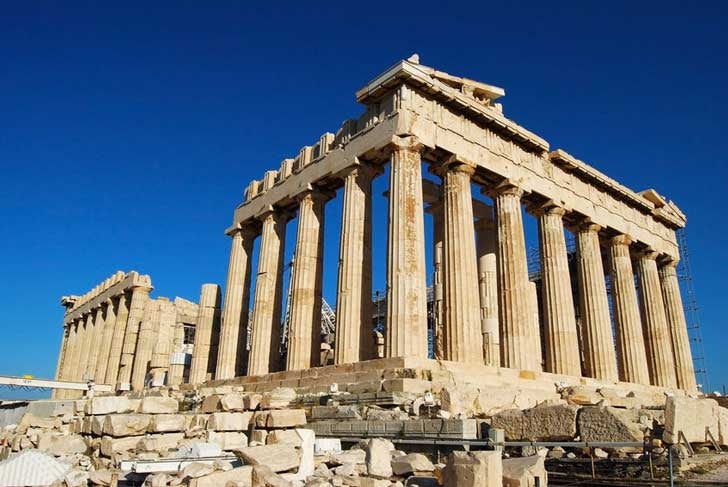
Was cannabis an early form of medicine in the homeland of Hippocrates? There is evidence that ancient Greeks used cannabis to treat inflammation, earaches, and edema, and in fact, the word “cannabis” can be traced back to the ancient Greek word kannabis.
In the writings of Herodotus in the fifth century BCE, the famed Greek historian speaks of the hemp cultivation in Scythia, saying that the Sychtians crush up hemp seeds and burn them on stones and “immediately it smokes, and gives out such a vapour as no Grecian vapour-bath can exceed; the Scythians, delighted, shout for joy.”
It is believed that cannabis was largely unknown to contemporary Greeks when Herodotus wrote that passage.
In Cannabis in the Ancient Greek and Roman World, the author writes that “hemp and cannabis are the same plants and thus the ancient Greeks and Romans must have used it in their daily lives.”
The book states that ancient Greeks and Romans used hemp fiber for boat sails, ropes, wicker-work, clothes, and shoes, and that “it is generally agreed that hemp was an everyday item.”
That said, the author states that “the Classics community is undecided” on the matter of whether or not ancient Greeks and Romans used psychoactive cannabis in their daily life and there is “no archaeological ‘smoking gun’ concerning cannabis in ancient Greece and Rome.”
In The Medical Use of Cannabis Among the Greeks and Romans, James L. Butrica writes of Greek physician Pedanius Dioscorides who wrote the five volume medical text Materia Medica. According to Butrica, the book contains “probably the earliest surviving account of the medicinal use of cannabis,” of the era.
Published round 65 CE, the book describes “a poultice made from the boiled root of wild cannabis supposedly effective against inflammations and chalk-stones,” as well as more than 100 other mentions of the plant and its uses, including to treat earaches.
In addition, he states that Historia naturalis by the Roman author Pliny the Elder, published in 77 AD includes “otherwise unsupported claims about the medical use of ‘tame’ cannabis that closely resemble well-attested uses of ‘wild’ cannabis.”
These claims include the use of cannabis to treat ear-worms, headaches, stiffness in joints, gout, a salve for burns, and to treat “farm-animals bellies.” It also states that cannabis seed “is said to extinguish mens’ semen.”
Treating earaches was also a usage described by Roman physician Claudis Galen in his work De Simplicium Medica: Temperamentis ac Faultatibus, and Galen also spoke about the recreational use of cannabis seeds, as did the comic poet Ephippus in the fourth century BCE.
Marijuana in the (not-quite ancient) Netherlands
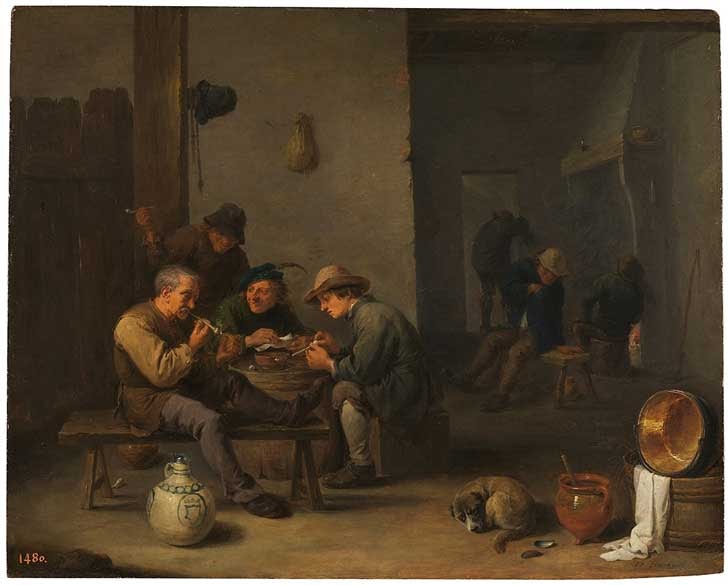
Marijuana and the Netherlands go hand in hand – but smoked-out coffee shops on the canals of Amsterdam only tell half the story.
While there are claims of evidence that cannabis has been used in the Netherlands for hundreds, possibly even thousands of years, one thing’s for certain — hemp was grown widely in the low countries back during the Dutch Golden Age of the 17th century, and was a crucial component for making textiles and rope for one of the world’s great naval powers.
Visitors to the Hash Marihuana and Hemp Museum in Amsterdam can marvel at the paintings of 17th century Dutch artists which depict sailors, soldiers, and artists, getting high in the old-timey coffeeshops of the Golden Age.
And according to Sex Drugs n Rock n Roll in the Golden Age, “the young people of the Golden Age were the first generation in history to embrace smoking and turn it into a mainstream habit and national pastime.”
Marijuana in the Medieval Islamic World
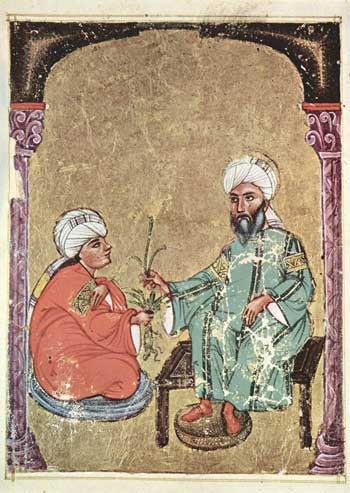
Hashish has long been a mainstay of the Islamic world from north Africa across modern-day Turkey, the Levant, and into Central Asia. But during the lifetime of Muhammad (AD 570-632) “the use of cannabis preparations was unknown,” which may be why it was not forbidden in the Quran.
By the ninth century however, the Muslim world became familiar with cannabis both for medicinal reasons and otherwise, as Muslims traversed trade routes from Baghdad to Persia, India, and beyond. It reached greater popularity in the 11th century when the Seljuks captured Baghdad.
One of the most well-known ancient marijuana use urban legends is from this time, the story of Hasan-I-Saban, who founded in Persia the fanatical order of the Hashishiyans. Although it is widely accepted that the word “assassins” is derived from the order, it is not supported by historical evidence. According to scholar Bernard Lewis in The Assassins: A Fanatical Sect in Islam, “the followers of Hasan were nicknamed ‘Hashishiyah’ as an expression of contempt for their wild beliefs and extravagant behavior.” In other words, it was a way to insult them by comparing them to hash users.
Some members of the mystical Islamic branch Sufis, contemporaries of the Hashishiyans, were also known to use hashish in rituals, helping spread it through the Islamic world. Uder the Mamluk Dynasty in Syria and Egypt, as well as all through the reign of the Ottoman Empire, the use of hashish was common in the Muslim world, particularly in Egypt. It was commonly associated with the lower classes and the poor and was met with disapproval by the ruling class and elites.
Cannabis was less popular in Turkey than in the Ottoman’s empires provinces of Syria and Egypt.
Regarding medicinal use, Gabriel G. Nahas writes in Hashish in Islam 9th to 18th Century that ninth century physician al-Razi (865-925) “refers to using hemp leaves as a medicament for the ear, and prescribes them for dandruff and for dissolving flatulence.”
He continues: “other Arab physicians reported that hashish was used to stimulate the appetite (al-Badri, 1251) and produced a craving for sweets; others described it as ‘a beautiful music to the sense of hearing.’”
Other than Egypt, Morocco has been a major center of cannabis in North Africa beginning in the 13th century. To this day the country — where hashish is called kif — remains a major exporter of hashish to Europe, the rest of the Middle East, and beyond.
And while many people think of strict religious conservatism in regards to the Muslim world, “debates within the Middle East and Iran have been vibrating for several centuries.”
Marijuana in Ancient Israel
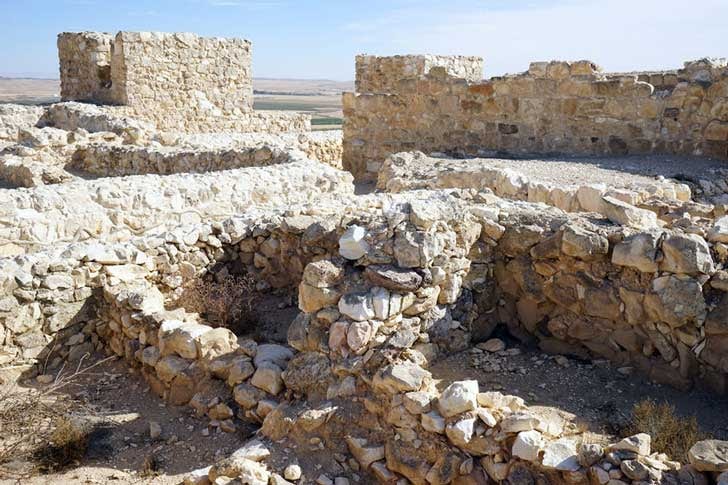
Do the words “kaneh bosem” sound familiar to you? Appearing in the Torah, in the book of Exodus is a passage that refers to a “fragrant cane” (“kaneh” is Hebrew for cane or reed and “bosem” for perfume or fragrant), that Moses is told by God to use as an anointing oil in rituals.
In the 20th century a Polish linguist named Sula Benet determined that kaneh bosem is most likely the origin of the word “cannabis.”
Elsewhere in Exodus, kaneh bosem is described as an anointing oil for the Hebrews’ tabernacle.
But we don’t have to look just at the bible to find evidence that ancient Israelites were using cannabis. In May 2020, researchers announced that they found cannabis residue on an altar at a religious shrine at Tel Arad in southern Israel. The site was used for prayer services during the Kingdom of Judah around 700 BCE and as the researchers stated, dark material found on the altar included THC, CBD, and CBN with “an assortment of terpenes.”
They also suggested that the cannabis resin had been mixed with animal dung to heat it.
The researchers stated that the discovery was “the earliest evidence for the use of cannabis in the Ancient Near East,” and that it was likely used “as a deliberate psychoactive, to stimulate ecstasy as part of cultic ceremonies.”
Sign up for bi-weekly updates, packed full of cannabis education, recipes, and tips. Your inbox will love it.

 Shop
Shop Support
Support

